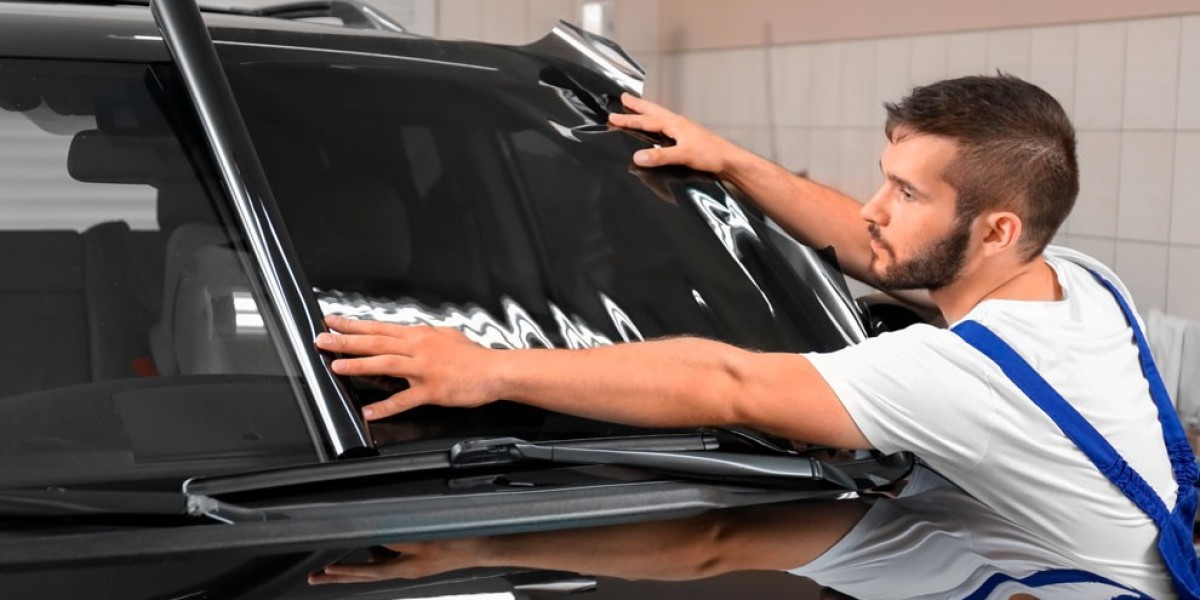Automotive window tinting has become an increasingly popular choice among car owners looking to enhance their vehicles' aesthetics and functionality. Whether you’re interested in protecting your car's interior, improving privacy, or reducing heat, window tinting offers a myriad of benefits. This comprehensive guide delves into the world of automotive window tinting, exploring its types, benefits, application process, legal considerations, and maintenance tips.
What is Automotive Window Tinting?
Automotive window tinting involves applying a thin film to the windows of a vehicle to reduce the amount of light that enters. The film can vary in thickness and composition, offering different levels of tint and UV protection. Tinting can be done on any window of the vehicle, including the windshield, side windows, and rear windows.
Types of Window Tint Films
Choosing the right type of window tint film is crucial for achieving the desired look and functionality. Here are the most common types:
Dyed Window Tint
Dyed window tint films are the most affordable option. They are made by placing a layer of dye between an adhesive layer and a protective outer layer. While they provide a good aesthetic appeal and some heat reduction, they may not be as effective in blocking UV rays compared to other types.
Metalized Window Tint
Metalized films are designed with tiny metal particles that reflect heat away from the vehicle. This type of tint offers better UV protection and heat rejection than dyed films, making it a popular choice for those living in hot climates. However, metalized films can interfere with radio signals, which is something to consider if you rely on GPS or satellite radio.
Carbon Window Tint
Carbon window tint films contain carbon particles that effectively block infrared rays while maintaining a sleek appearance. These films do not fade over time and provide excellent heat rejection, making them a preferred choice for many car owners. Additionally, carbon films do not contain metal, so they do not interfere with electronic signals.
Ceramic Window Tint
Ceramic window tint is the highest-quality option available. Made from ceramic particles, this film offers superior heat rejection and UV protection without affecting visibility. Ceramic films are also less reflective than metalized films, providing a more natural look while maintaining comfort inside the vehicle. Though they tend to be more expensive, many consider them worth the investment.
Benefits of Automotive Window Tinting
The benefits of automotive window tinting extend beyond aesthetics. Here are some of the most significant advantages:
UV Protection
One of the primary benefits of window tinting is the protection it offers against harmful ultraviolet (UV) rays. Prolonged exposure to UV rays can cause skin damage and increase the risk of skin cancer. High-quality window tint films can block up to 99% of UV rays, providing a safer environment for passengers.
Heat Reduction
Window tinting helps to keep the interior of your car cooler by reducing heat buildup. This is especially beneficial during the hot summer months, as it enhances comfort for both the driver and passengers. Less reliance on air conditioning can also lead to improved fuel efficiency.
Increased Privacy
Tinted windows provide a higher level of privacy for passengers and belongings inside the vehicle. This added security can deter potential theft, as valuables are less visible to passersby. Additionally, it creates a more comfortable environment for passengers who may prefer to travel without prying eyes.
Glare Reduction
Driving can become challenging due to glare from the sun, especially during dawn and dusk. Automotive window tinting significantly reduces glare, making it easier to see the road and enhancing overall safety while driving.
Interior Protection
Over time, sunlight can fade and damage the upholstery, dashboard, and other interior components of your vehicle. Tinted windows block a significant amount of sunlight, helping to preserve the interior materials and maintain the vehicle's resale value.
Enhanced Aesthetics
Window tinting can significantly improve the overall appearance of your vehicle. Whether you prefer a sleek, sophisticated look or a sportier aesthetic, window tinting provides a custom finish that complements your car's design.
The Application Process
The process of applying window tint involves several key steps:
Choosing a Reputable Installer
It’s essential to select a professional and reputable installer to ensure the job is done correctly. Look for reviews, certifications, and experience in the field.
Selecting the Right Tint
Based on your needs, budget, and preferences, choose the right type of window tint. Discuss your options with your installer to make an informed decision.
Preparing the Vehicle
The vehicle needs to be thoroughly cleaned before the application. This step involves removing any dirt, dust, or grime from the windows to ensure proper adhesion of the film.
Cutting the Film
The installer will measure and cut the tint film to fit each window precisely. High-quality tint is typically pre-cut using specialized software to ensure accuracy.
Applying the Tint
The installer will carefully apply the tint to each window, ensuring there are no bubbles or imperfections. This step requires precision to achieve a flawless finish.
Curing the Film
After application, the tint needs time to cure. This period can vary depending on the type of film used and the weather conditions. During this time, it's crucial to avoid rolling down the windows or cleaning them.
Legal Considerations
Before getting your windows tinted, it’s essential to be aware of the legal regulations in your area. Each state or country has its own laws regarding the level of tint allowed on various windows of a vehicle.
Visible Light Transmission (VLT)
Laws often specify a minimum percentage of visible light transmission (VLT) allowed for window tint. For example, front windshields may require a higher VLT compared to rear windows. It’s important to check local regulations to ensure compliance.
Medical Exemptions
Some jurisdictions offer medical exemptions that allow for darker tints for individuals with specific medical conditions. If you believe you qualify, consult your local authorities for more information.
Maintaining Tinted Windows
Once your windows are tinted, proper maintenance is crucial to ensure longevity and effectiveness. Here are some maintenance tips:
Avoid Cleaning the Windows Immediately
Do not clean your tinted windows for at least 48 hours after installation. This allows the adhesive to set properly.
Use the Right Cleaning Products
When cleaning tinted windows, avoid ammonia-based cleaners, as they can damage the film. Instead, opt for mild, non-ammonia cleaners and use a soft microfiber cloth.
Regular Inspections
Regularly inspect your tinted windows for any signs of peeling, bubbling, or discoloration. If you notice any issues, consult your installer for potential repair or replacement.
Conclusion
Automotive window tinting is an excellent investment for any vehicle owner looking to enhance comfort, style, and safety. With various types of films available and numerous benefits, it's easy to see why so many people choose to tint their windows. By understanding the application process and legal considerations, as well as maintaining your tinted windows properly, you can enjoy all the advantages that window tinting has to offer. Whether you're driving in the blazing sun or looking to add a touch of elegance to your car, window tinting can significantly improve your driving experience.
Naijamatta is a social networking site,
download Naijamatta from Google play store or visit www.naijamatta.com to register. You can post, comment, do voice and video call, join and open group, go live etc. Join Naijamatta family, the Green app.
Click To Download


